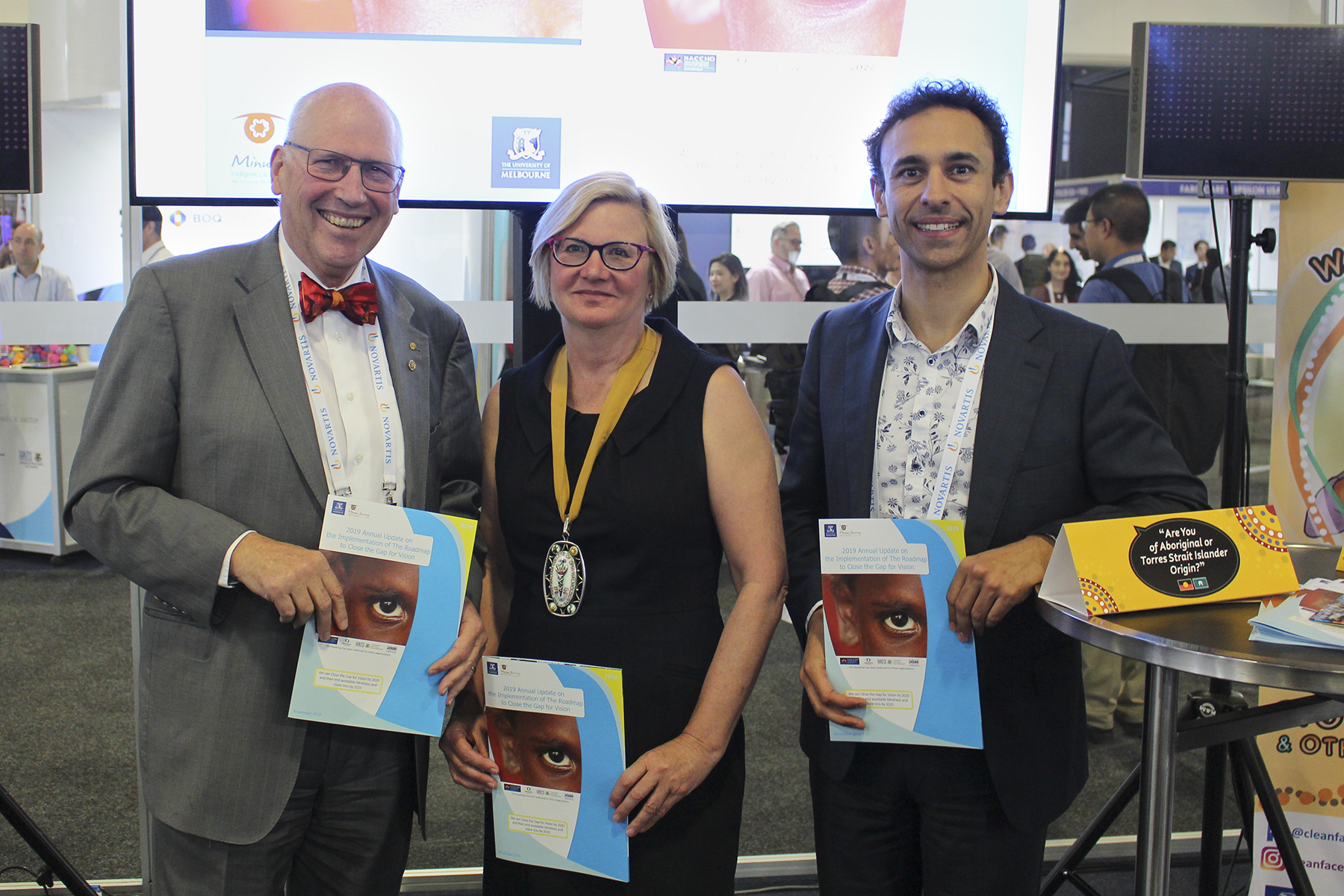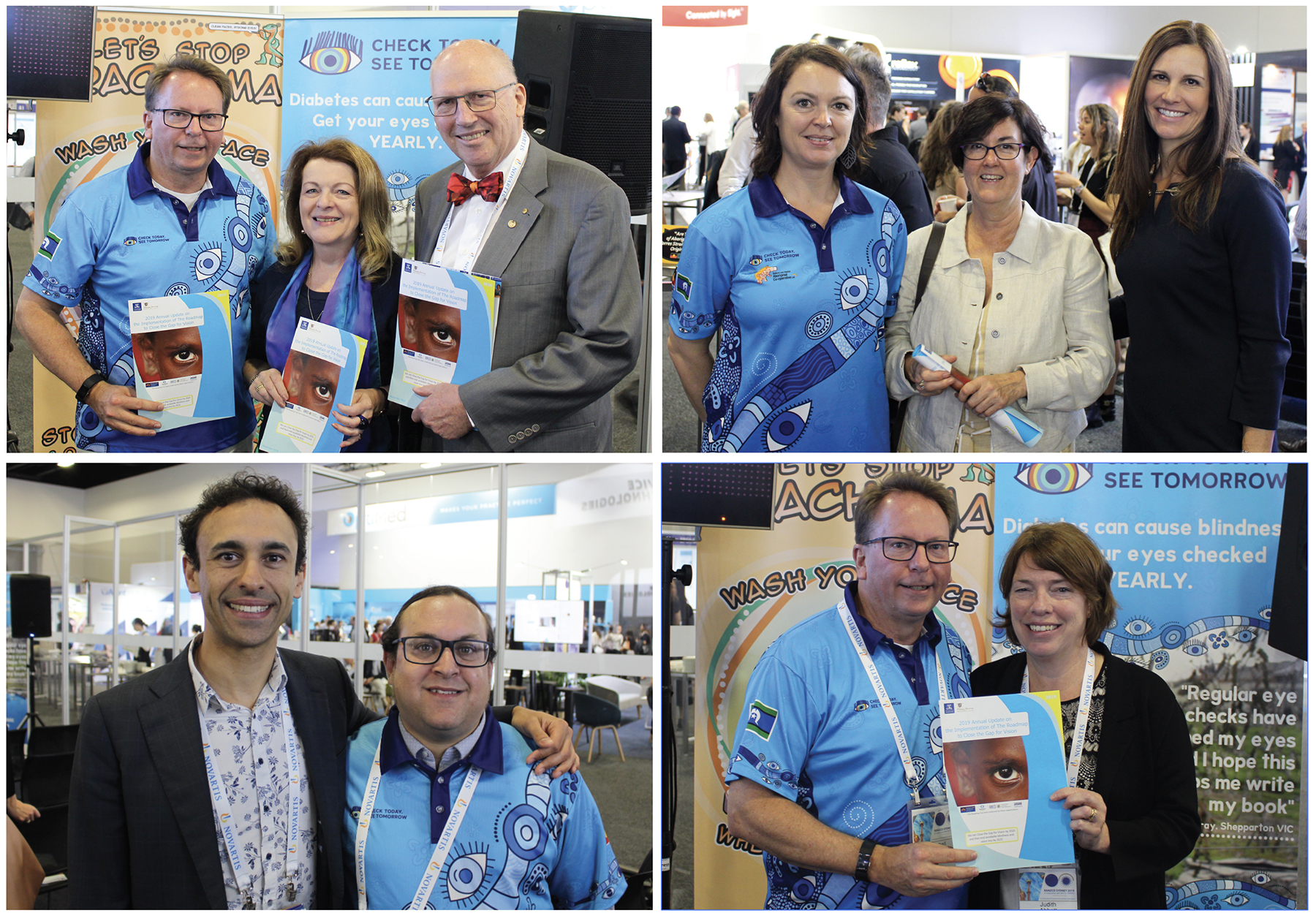2019 Roadmap Annual Update
Australia is on track to close the gap for vision for Indigenous Australians by the end of next year, but this won’t be achieved without ongoing support for long-term solutions.

The Launch
On Monday 11 November, Indigenous Eye Health launched the 2019 Annual Update on the Implementation of the Roadmap to Close the Gap for Vision at the 51st Royal Australian & New Zealand College of Ophthalmologist (RANZCO) in Sydney, NSW. RANZCO President Dr Heather Mack and Australian Indigenous Doctors Association President and first Indigenous Opthalmologist Dr Kris Rallah-Baker joined Professor Hugh Taylor, head of IEH to launch the update. Thank you to all who attended the launch and to everyone who contributes to the work to Close the Gap for Vision.

The Annual Update
The 2019 Annual Update on the Implementation of the Roadmap to Close the Gap for Vision reveals that:
- 50 per cent of systemic issues identified in Indigenous eyecare have been fixed. Progress is being made on all of the intermediary steps, with almost 80 per cent complete
- Outreach eye examinations received by Indigenous Australians have almost tripled in the the last six years
- Cataract surgery rates have increased nearly 2.5 times since 2008, however a further 2400 cataract surgeries are required each year to meet the population need
- Indigenous patients still wait 50 per cent longer for cataract surgery in public hospitals, promoting calls for more timely access, resources and case management
- The number of Indigenous Australians with diabetes receiving annual eye checks for diabetic retinopathy – which causes vision loss and blindness – has more than doubled over the last 10 years. With 155 retinal cameras being provided to Aboriginal Community Controlled Health Organisations (ACCHO), these rates will continue to improve
- Subsidised schemes are being reviewed and strengthened to improve access to prescription glasses.
Nearly eight years since launching his plan to improve the eye health of Indigenous Australians, University of Melbourne ophthalmologist Hugh Taylor said significant advances are also being made to meet the WHO target for the elimination of trachoma – a blinding eye infection that’s only found in Indigenous communities in Australia – by the end of 2020.
“We’re making some really good progress and we’ve seen that what’s been recommended and implemented actually works,” Professor Taylor said.
“Over the last 10 years, the number of community hotspots for trachoma has reduced from 54 to 13. Trachoma is easily spread between children so ongoing efforts are needed to maintain improvements in hygiene.”
As we approach the final year of the Roadmap, Professor Taylor said steps still need to be taken to guarantee equity by 2020.
“We have seen an increase in funding and a three-fold increase in outreach of eye services, but to meet community needs we still have another 25 per cent to go,” Professor Taylor said.
“The work being done by the Aboriginal and Torres Strait Islander health organisations and all of our partners in eye health has been instrumental in this progress. We cannot overemphasise the importance of linking primary health care with specialist eye health services.
“Ongoing support is vital to ensuring the expanded services are firmly embedded in the ACCHOs and other primary care providers to make sure that the changes are sustainable over the long term. It will not be possible to close the gap for vision without additional funding.”
Professor Taylor highlighted Vision 2020 Australia initiatives as priority areas for government.
“Vision 2020 Australia and its members have launched a five-year plan to improve Indigenous eye health,” Professor Taylor said. “The Strong Eyes, Strong Communities plan calls for $85.5 million to empower ACCHOs, build on our work to close the gap for vision and provide a framework and advocacy program until 2024.
“Ongoing reporting and monitoring of progress are also of critical importance for maintaining service levels. Funding is urgently required to repeat the National Eye Health Survey in 2020 to gather data and measure the improvement in eye health.”
The 2019 Annual Update on the Implementation of the Roadmap to Close the Gap for Vision is being launched today at the Royal Australian and New Zealand College of Ophthalmologists 51th Annual Scientific Congress in Sydney.
Media enquiries: Holly Watkins | 0430 588 055 | holly.watkins@unimelb.edu.au